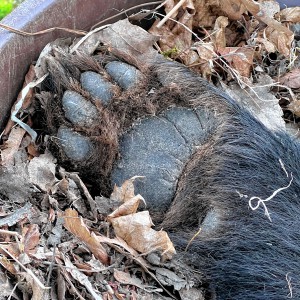Best Bites: Deep Korean flavors in the Valley
| Published: 01-04-2023 12:11 PM |
In the universe of Asian cuisines that are widely available in America, Korean is an anomaly. Chinese, Japanese and Thai restaurants came of age earlier in the 20th century — and with them, the sticky-sweet, Americanized dishes that became associated with each (General Tso’s, teriyaki, Pad Thai). Korean restaurants, on the other hand, catered little to American palates. They kept their menus authentic and thrived mostly on business from other Koreans.
Awareness of Korean food among non-Koreans in America really started taking off in New York’s Koreatown (near Penn Station). In the 1980s and 1990s, Koreatown became a gathering spot for chefs and line cooks of all ethnicities, who would come for after-hours dining and drinking and discover the spectacular range of deep flavors in Korean cuisine.
Then, finally, came the semi-Americanization of the genre. In 2008, Roy Choi, a former street thug who goes by “Papi,” after training at the Culinary Institute of America and Le Bernardin (arguably America’s best restaurant), opened a food truck in Los Angeles called Kogi and introduced America to the “Korean taco.” Choi’s tacos replaced Mexican carne asada or carnitas with Korean grilled meats; and replaced the salsa with kimchi, Korea’s national staple of fermented cabbage with red chili (it’s like sauerkraut, but so much more complex). Before long, foodies in LA, and then across America, were going ga-ga for bulgogi (thinly sliced, sweetly marinated beef) tacos. Korean fried chicken, bright red and intensely sweet and intensely spicy, has also become a national sensation.
I love all of these versions of Korean food — from the totally authentic to the totally Americanized — but today’s column focuses on where to get real, traditional Korean food around here.
“Gohyang” means “hometown” in Korean, and Gohyang restaurant, on Route 9 in Hadley, delivers on the promise of real home cooking. You won’t find bulgogi tacos here, but rather a menu of true classics. It’s a haven for international students who miss their moms’ cooking. Like the cuisine, the room is cozy and homey and intimate, with simple wooden tables and wainscoting.
A traditional Korean restaurant meal usually starts with a free assortment of “banchan” — a bunch of small, mostly vegetable-focused plates. Gohyang’sbanchan are pretty basic (pickled radish, garlic spinach, bean sprouts), and they only come with dine-in orders. Among starters on the menu, kimbap (Korean-style seaweed-wrapped sushi rolls) hit the spot. A “samgyumpsal” version pairs crispy pork belly and rice with sweet egg, spinach, shredded carrot, cucumber, pickled daikon radish and surimi (imitation crabmeat) for a complex but still light bite.
Where Gohyang’s kitchen excels most is with their hearty meal-sized soups and stews. My favorite of these is tteok manduguk, a deep, garlicky, slightly milky beef broth with tender pieces of lean brisket, slippery glass noodles, and immensely satisfying homemade dumplings whose soft filling melds together meat, pickle and root-vegetable flavors into a wonderful mess.
Dwenjangjjigae, a stew of fermented-soybean stock, has a totally different but equally homey flavor. It’s a soothing mix of tofu (soybean on soybean!), clams, potatoes, onions, mushroom slices and zucchini. Other winners on the menu include kimchi jjigae (spicy kimchi stew), soondubu (tofu stew), and bibimbap, Korea’s most famous dish, where you self-toss a sizzling stone pot of rice with a garden’s worth of vegetables, meats, fried egg, and sweet chili paste.
Article continues after...
Yesterday's Most Read Articles
 Holyoke man finds bear paw in his yard
Holyoke man finds bear paw in his yard
 Boyfriend accused in slaying of Hampden sheriff’s assistant, former legislator’s top aide
Boyfriend accused in slaying of Hampden sheriff’s assistant, former legislator’s top aide
 Three finalists named for Ryan Road School principal in Northampton
Three finalists named for Ryan Road School principal in Northampton
 Developer pitches new commercial building on Route 9 in Hadley
Developer pitches new commercial building on Route 9 in Hadley
 Two men dump milk, orange juice over themselves at Amherst convenience store
Two men dump milk, orange juice over themselves at Amherst convenience store
 Sadiq to leave Amherst middle school principal role
Sadiq to leave Amherst middle school principal role
The fun on Route 9 doesn’t end with the restaurant: next door, in the same building (which once housed Hadley’s post office), are “singing rooms” for after-dinner karaoke. Note that Gohyang doesn’t serve alcohol, but BYO is welcomed.
One thing Gohyang doesn’t do is cook-at-the-table Korean barbecue — a tradition like none other. Cana, in Chicopee, is the place for this.
The meal-deal steal at Cana is called “Combo A,” which for $80 gets you a meal that easily serves three, maybe four. You’ll start with an excellent scallion pajeon (pancake), so rich and crispy that it’s easy to fill up on too much of it, to the exclusion of the rest of your enormous meal. As a “side entrée” you can choose a soft, comforting soybean stew, veggie stone-pot bibimbap, or fried rice. The combo even comes with wine or beer at no extra charge.
Cana’s assortment of banchan and condiments is particularly wide. For Combo A, you pick 10 of them from an illustrated card. These include excellent cabbage kimchi, daikon-radish kimchi, sweet shredded potatoes, and a whole lot more. One of your 10 choices should be lettuce leaves, which will serve as a wrapping for your meat.
Then comes the main event: the barbecue. The friendly staff will turn on the grill for you as you’re enjoying your starters. The meat comes to the table raw, thinly sliced, and you cook it on a metal grill for two or three minutes. Then, with the help of scissors and tongs, you gather it, wrap it in a big lettuce leaf (ideally with fermented soybean paste, raw garlic and herbs), and go straight to meat paradise. Galbi (short rib) is the classic. There’s also beef or pork bulgogi, beef brisket, rich jeju (black pig) pork belly and some chicken options. Best is a combination of several of the above.
Cana’s atmosphere is modern and minimalist, with almost glaringly bright white track lighting. On the walls, a photo installation of scenes from Korea complements a few traditional art objects.
There are a few other good Korean options in the area. In Greenfield, Manna House is a simple, quiet, white-walled, lacquered-wood-tabled, very-high-ceilinged, BYO Korean restaurant that does a great job with kimbap, steamed tofu, seafood scallion pancake, and stews featuring kimchi and/or tofu.
Downtown Amherst’s House of Teriyaki, in a cute room warmly lit by Japanese lanterns, serves a short but sweet Korean menu to go with its longer Japanese one. The highlights include seafood pancakes, spicy Korean fried chicken, soondubu (tofu stew), spicy galbi tang (spicy short-rib stew), and, of course, bibimbap. Seafood jjangbong is like a Korean take on bouillabaisse, but its spicy orange broth gets its color from chili rather than tomato or saffron. Prices are very reasonable.
Kisara in Easthampton, reviewed in my last column, has a few Korean dishes in the “house favorites” section of their menu, including bibimbap, galbi (grilled marinated short ribs), ribeye bulgogi (marinated thin-sliced beef), and a variety of kimchi-based dishes, including, most uniquely, kimchi bacon tacos. Riff’s Joint, also in Easthampton, reviewed earlier in the year in my gastropubs column, also does a great (if sweet) job with Korean tacos and other fusion.
Finally, Master Chef, in South Hadley, has the atmosphere of a take-out lunch counter, but the pan-Asian menu includes some Korean classics (bibimbap, galbi, bulgogi) and meta-Korean fusion (kimchi ramen, kimchi fried rice). Daily specials are usually interesting, and the staff’s got tons of charm.
Robin Goldstein is the author of “The Menu: Restaurant Guide to Northampton, Amherst, and the Five-College Area.” He serves remotely on the agricultural economics faculty of the University of California, Davis. He can be reached at rgoldstein@ucdavis.edu.
]]>

 Valley Bounty: Grass-fed animals that feed the grass: Gwydyr Farm in Southampton focuses on ‘restoring the connection between land, food and people’
Valley Bounty: Grass-fed animals that feed the grass: Gwydyr Farm in Southampton focuses on ‘restoring the connection between land, food and people’ Weekly Food Photo Contest: This week’s winner: Mary Chicoine of Easthampton
Weekly Food Photo Contest: This week’s winner: Mary Chicoine of Easthampton  Speaking of Nature: A romantic evening for two birders — To hear the wonderful sounds of the Saw-whet Owl one must go outside at night
Speaking of Nature: A romantic evening for two birders — To hear the wonderful sounds of the Saw-whet Owl one must go outside at night Speaking of Nature: Where have all the birds gone?: They’re there, and here’s a handy tool to keep track of their appearances
Speaking of Nature: Where have all the birds gone?: They’re there, and here’s a handy tool to keep track of their appearances
